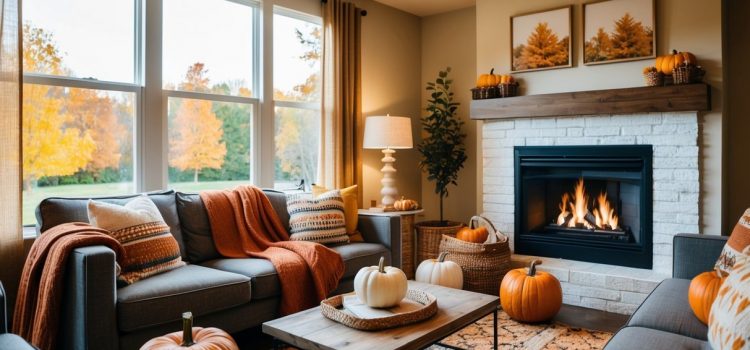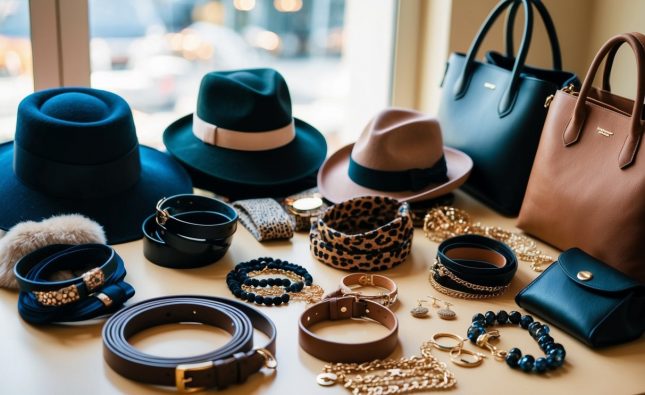
As the seasons change, so do fashion trends and personal styles. Each season brings unique colors, textures, and patterns that can refresh a wardrobe. Identifying these seasonal shifts and adapting styles can elevate one’s fashion game, making it easier to express individuality and stay relevant.

Incorporating seasonal elements doesn’t require a complete wardrobe overhaul. Simple adjustments, such as layering or choosing seasonal colors, can make a significant impact. This article explores essential tips and tricks for embracing seasonal styles without feeling overwhelmed.
Understanding how to transition outfits while maintaining comfort and style is crucial. From selecting the right fabrics for cooler weather to incorporating vibrant hues in spring, these insights will help anyone navigate their fashion journey with ease.
Understanding Seasonal Style Concepts
Seasonal style is shaped by various factors, including weather changes and cultural influences. Recognizing these concepts helps individuals make informed fashion choices throughout the year.
The Role of Weather in Fashion Choices
Weather significantly influences clothing selection. Each season presents unique conditions that dictate choices in fabric, color, and style.
- Spring: Light fabrics like cotton and linen emerge. Pastel colors and floral patterns reflect the blooming environment.
- Summer: Breathable materials are essential. Bright colors and sleeveless designs dominate to accommodate rising temperatures.
- Autumn: Layers become crucial as temperatures drop. Rich hues like burgundy and mustard reflect the changing leaves.
- Winter: Insulation becomes a priority. Wool and heavy knits are common, along with darker tones to absorb warmth.
Fashion adaptation to weather ensures comfort and practicality while expressing personal style.
Cultural Influence on Seasonal Styles
Cultural factors also play a pivotal role in seasonal fashion. Traditional attire often reflects the climate and local customs.
- Festivals: Many cultures celebrate seasonal changes through festivals, influencing attire. For example, Diwali in India features vibrant, ornate clothing.
- Regional Variance: Different regions experience unique climates, impacting style. Coastal areas may lean towards lighter fabrics even in winter compared to mountainous regions.
- Fashion Weeks: Global fashion events set trends. Designers often draw inspiration from cultural heritage, merging traditional styles with contemporary elements.
These cultural influences create a rich tapestry of seasonal fashion, adding variety and depth to personal choices.
Spring and Summer Style Guide
As warmer weather approaches, making thoughtful choices in fabrics and colors enhances personal style. Emphasizing light materials and vibrant tones can create a fresh look for the seasons.
Embracing Light Fabrics and Bright Colors
Spring and summer wardrobes benefit significantly from lighter fabrics. Materials like cotton, linen, and rayon are breathable, making them ideal for warmer temperatures. These fabrics allow for comfort while maintaining a polished appearance.
Bright colors are equally important during these seasons. Shades such as pastel pinks, vibrant yellows, and cool blues can uplift any outfit. Layering lighter colors, such as pairing a soft blouse with white trousers, creates a crisp, seasonal look. Using prints, such as florals or stripes, can also add interest and personality.
Summer Accessories and Footwear
Accessories complete the seasonal look. Sunglasses are essential; choosing bold frames can make a stylish statement while providing sun protection. Wide-brimmed hats not only enhance outfits but also offer needed shade.
Footwear should prioritize comfort without sacrificing style. Open-toed shoes or sandals in materials like leather or canvas are excellent choices. Espadrilles and flip-flops work well for casual outings, while stylish sneakers can elevate a more relaxed ensemble. Investing in quality pieces ensures longevity and versatility throughout the warmer months.
Fall and Winter Wardrobe Essentials

Essentials for fall and winter focus on layering and quality outerwear. These components not only provide warmth but also allow for versatile styling throughout the colder months.
Layering Techniques and Textures
Layering is essential for adapting to fluctuating temperatures. Start with a base layer made of moisture-wicking fabrics to keep dry. Fabrics like merino wool or synthetic blends work well.
Add a mid-layer for insulation. Options include fleece pullovers or lightweight down vests, which trap heat without adding bulk.
Finish with a top layer, such as a stylish cardigan or oversized sweater, made from breathable materials. Mixing textures, like pairing a chunky knit with a smooth silk blouse, adds visual interest. Accessories like scarves can enhance not only warmth but also style. Opt for rich, autumnal colors to embody the season’s aesthetic.
Investing in Quality Outerwear
Quality outerwear is crucial for fall and winter. A well-constructed coat provides warmth, comfort, and longevity. Consider options like a tailored wool coat for formal occasions or a puffer jacket for casual outings.
Look for features such as insulation types—down for maximum warmth, or synthetic for wet conditions. Waterproofing treatments are also important; seek coats made from water-resistant materials.
Don’t overlook functionality; choose items with pockets and hoods for convenience. Investing in timeless colors, like navy or black, ensures the coat remains versatile through seasons. A good outer layer will often become a staple in any winter wardrobe, blending style with essential protection against the elements.
Transitioning Your Wardrobe Between Seasons
Transitioning between seasons requires strategic planning to maintain style while accommodating changing temperatures. Key considerations include choosing versatile pieces and proper storage for off-season clothing.
Interchangeable Pieces for Versatility
Selecting versatile clothing is essential for smooth seasonal transitions. Investing in adaptable pieces allows for multiple outfits with minimal items. Key interchangeable items include:
- Layering Basics: T-shirts, long-sleeves, and lightweight sweaters can be worn alone or layered.
- Neutral Bottoms: Dark jeans and tailored trousers complement various tops and styles.
- Outerwear: A good-quality trench coat or denim jacket works in multiple seasons.
- Accessories: Scarves, hats, and jewelry can update looks without requiring a full wardrobe change.
These pieces work across seasons, ensuring that outfits remain stylish and functional. Prioritizing quality over quantity enhances longevity and reduces the need for frequent replacements.
Storage and Maintenance of Off-Season Apparel
Properly storing off-season clothing preserves its condition and longevity. Clean garments thoroughly before storage to remove stains and odors. Use sturdy, breathable containers or garment bags to protect against dust.
- Hanging vs. Folding: Heavy winter coats may be best hung, while delicate fabrics should be folded.
- Climate Control: Store in a cool, dry place to prevent mold and mildew.
- Check for Pests: Regularly inspect stored items for signs of bugs and use cedar blocks or lavender sachets for deterrence.
By following these storage practices, seasonal wardrobes remain fresh and ready for easy transitions.












